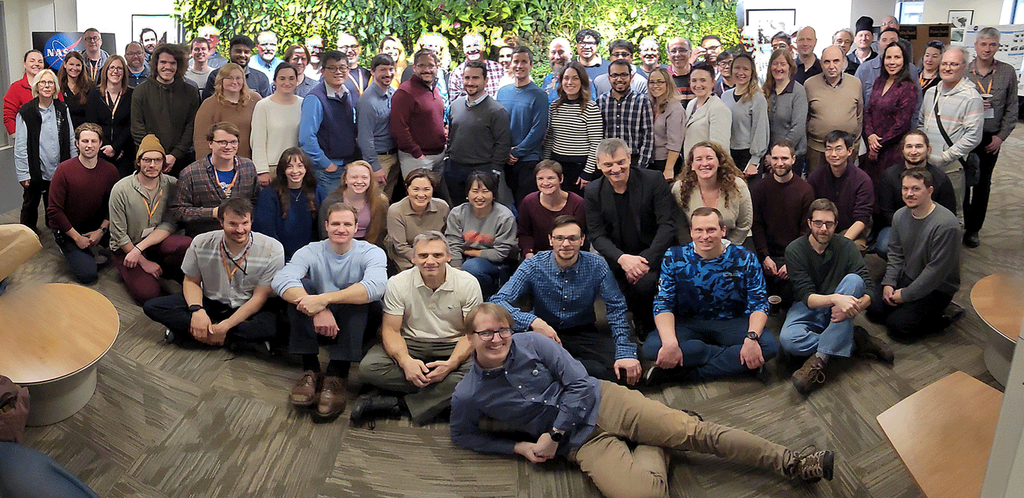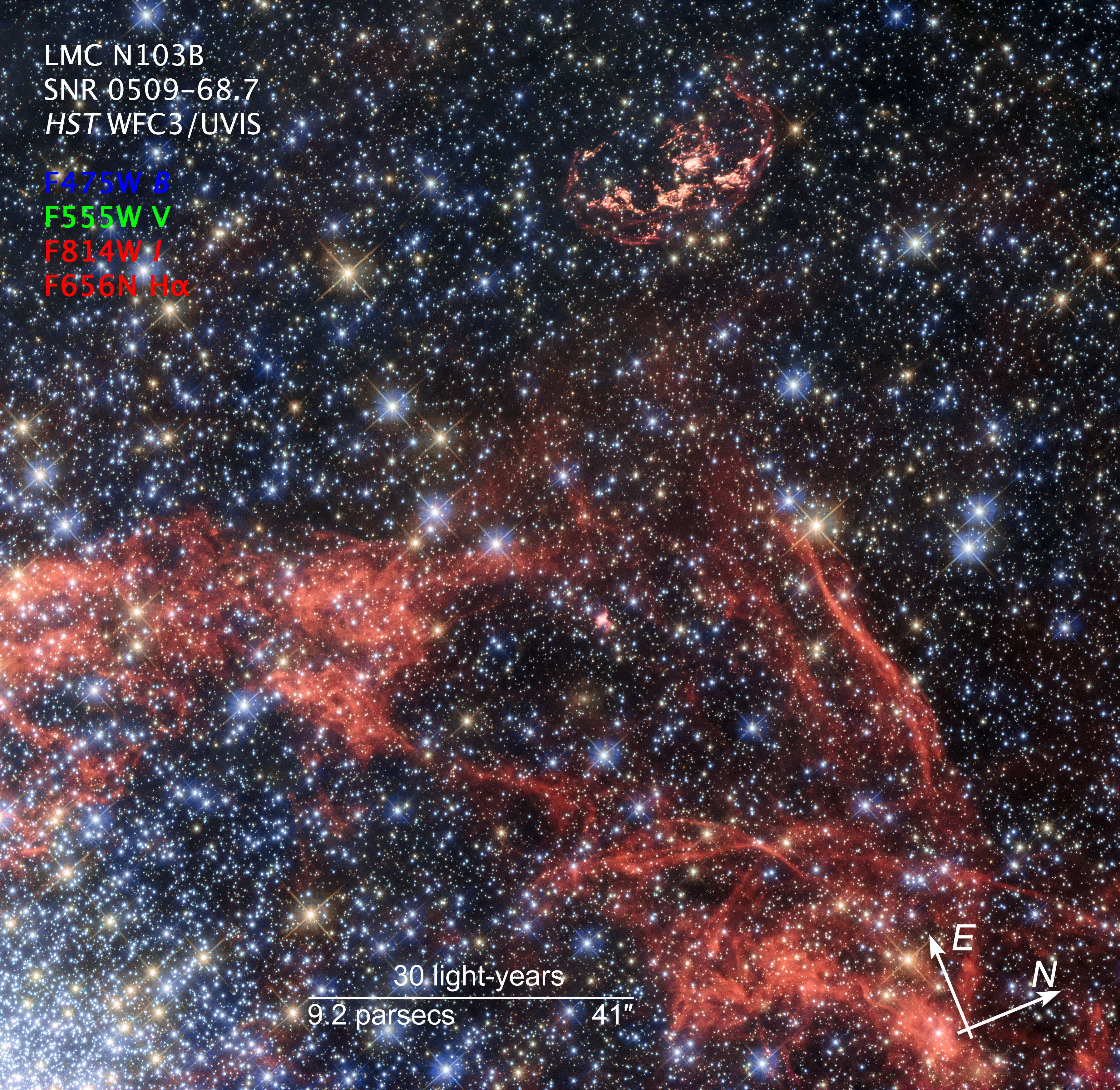1 min read
Wispy Remains of Supernova Explosion Hide Possible Survivor

This image, taken with NASA's Hubble Space Telescope, shows the supernova remnant SNR 0509-68.7, also known as N103B. It is located 160,000 light-years from Earth in a neighboring galaxy called the Large Magellanic Cloud. N103B resulted from a Type Ia supernova, whose cause remains a mystery. One possibility would leave behind a stellar survivor, and astronomers have identified a possible candidate.
The actual supernova remnant is the irregular shaped dust cloud, at the upper center of the image. The gas in the lower half of the image and the dense concentration of stars in the lower left are the outskirts of the star cluster NGC 1850.
The Hubble image combines visible and near-infrared light taken by the Wide Field Camera 3 in June 2014.
About the Object
- DistanceDistanceThe physical distance from Earth to the astronomical object. Distances within our solar system are usually measured in Astronomical Units (AU). Distances between stars are usually measured in light-years. Interstellar distances can also be measured in parsecs.160,000 light-years away
About the Data
- InstrumentInstrumentThe science instrument used to produce the data.HST>WFC3/UVIS
- Exposure DatesExposure DatesThe date(s) that the telescope made its observations and the total exposure time.June 2014
- FiltersFiltersThe camera filters that were used in the science observations.F475W B, F555W V, F814W I, and F656N Hα
- Object NameObject NameA name or catalog number that astronomers use to identify an astronomical object.SNR 0509-68.7, LMC N103B
- Object DescriptionObject DescriptionThe type of astronomical object.Supernova remnant
- Release DateMarch 30, 2017
- Science ReleaseSearch For Stellar Survivor of a Supernova Explosion
- CreditNASA, ESA, You-Hua Chu (ASIAA)

Blue: F475W B Green: F555W V Red: F814W I + F656N Hα

Share
Details
Claire Andreoli
NASA’s Goddard Space Flight Center
Greenbelt, Maryland
claire.andreoli@nasa.gov



































